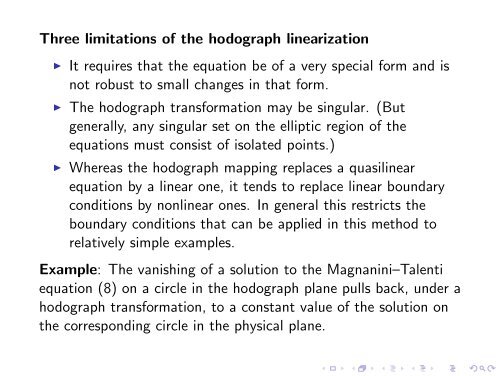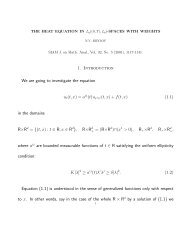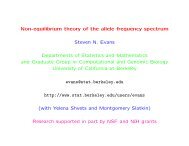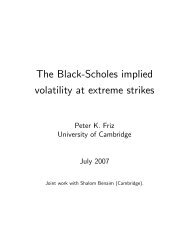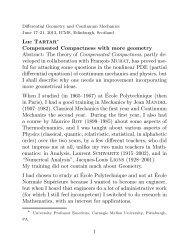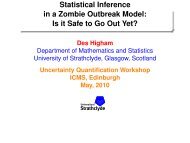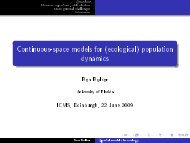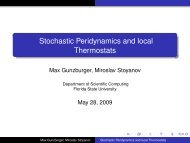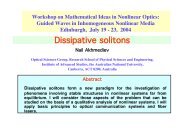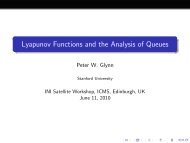A Mini-course on EllipticâHyperbolic Equations - ICMS
A Mini-course on EllipticâHyperbolic Equations - ICMS
A Mini-course on EllipticâHyperbolic Equations - ICMS
Create successful ePaper yourself
Turn your PDF publications into a flip-book with our unique Google optimized e-Paper software.
Three limitati<strong>on</strong>s of the hodograph linearizati<strong>on</strong>◮ It requires that the equati<strong>on</strong> be of a very special form and isnot robust to small changes in that form.◮ The hodograph transformati<strong>on</strong> may be singular. (Butgenerally, any singular set <strong>on</strong> the elliptic regi<strong>on</strong> of theequati<strong>on</strong>s must c<strong>on</strong>sist of isolated points.)◮ Whereas the hodograph mapping replaces a quasilinearequati<strong>on</strong> by a linear <strong>on</strong>e, it tends to replace linear boundaryc<strong>on</strong>diti<strong>on</strong>s by n<strong>on</strong>linear <strong>on</strong>es. In general this restricts theboundary c<strong>on</strong>diti<strong>on</strong>s that can be applied in this method torelatively simple examples.Example: The vanishing of a soluti<strong>on</strong> to the Magnanini–Talentiequati<strong>on</strong> (8) <strong>on</strong> a circle in the hodograph plane pulls back, under ahodograph transformati<strong>on</strong>, to a c<strong>on</strong>stant value of the soluti<strong>on</strong> <strong>on</strong>the corresp<strong>on</strong>ding circle in the physical plane.


